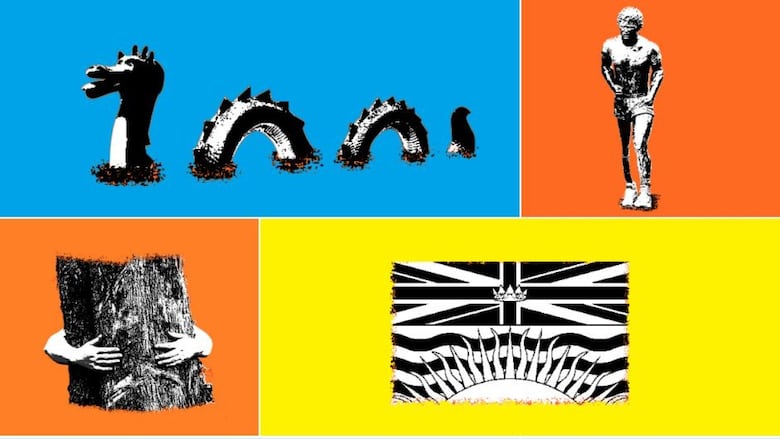Search for B.C.'s Best Symbol: Provincial Semifinals
It's the flag versus Terry Fox statues and the Ogopogo versus tree huggers in the final day of Sweet 16 voting

An official flag, with a setting sun overlaying coastal waters.
Statues of a young man from Port Coquitlam who became a national hero through his Marathon of Hope.
A mythical creature from the depths of a lake that defines an entire region of the province.
And a term that can either be a point of pride or an epithet for a common type of environmental protester.
The final four entries in the provincial section of the Search for B.C.'s Best Symbol reflect the wide range of things that can become symbols: official and unofficial, human and inanimate, physical and supernatural.
But what binds the B.C. flag, Terry Fox statues, Ogopogo and tree huggers are the ways they reflect specific things about the history, geography and culture of Canada's westernmost province.

Flora and fauna, First Nations and the Union Jack
Forrest Pass, a curator at Library and Archives Canada, said British Columbia symbology has historically differed slightly from the rest of Canada in three distinct areas.
One, he said, was an extensive array of flora and fauna being used at a relatively early time in the province's history. Another was the enthusiasm — or appropriation, depending on your view — of Indigenous symbols being used for the entire province.
And a third was the province's bond with the culture and history of the United Kingdom, reflecting immigration to B.C. and the rise in the country's nationalism during the time the province was settled.
"Those aren't necessarily completely different from the Canadian case," he said. "But there are differences of time and degree that we see these particular types of symbols emerge in British Columbia."
The Union Jack on the B.C. flag, the Indigenous history of the n ̓x̌ax̌aitkʷ or Ogopogo, and the contested history of what it means to be a "tree hugger" speak to those themes in the province.
Of course, none of that matters for a symbol unless they can capture the imagination of the public — as Terry Fox's Marathon of Hope continuing to inspire people 45 years later exemplifies.
"There can be some sort of top-down attempt to identify what symbols should be," said Canadian Historical Association president and York University professor Colin Coates.
"But if they don't capture the public imagination, I don't think they go anywhere,"
As for which of these four symbols moves on to the final eight in this competition?
That's up to you! Voting is open until 10 p.m. Pacific today.

